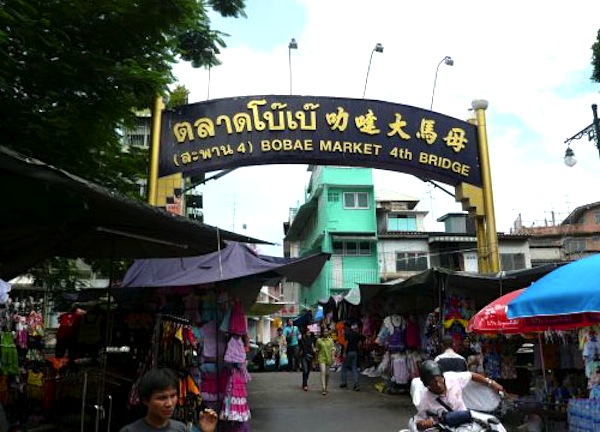If you are at play in the field of logistics with international trade, warehousing and distribution, sooner or later you will have to deal with shipping containers. This is the first article of a serie about documents and terms relating to your Supply Chain.
Suppose you have bought a large quantity of pants at the gigantic BoBae clothing market in Bangkok for a keen price. A good deal, and because you are not in a hurry and do not want to spend too much money on transport, you send them to the Netherlands by boat. Then you may need a Bill Of Lading (abbreviated B/L or BOL). The transferable Bill of Lading B/L is used in sea freight to regulate the responsibilities, rights and obligations of shipper, carrier and consignee.

Buying clothes at Bobae market in Bangkok
A Bill of Lading (B/L or BOL) has three functions;
1
First, the function of receipt. Your pants are ready for the boat trip in Bangkok. When they are picked up, the seller receives a copy of the Bill Of Lading (B/L) with a signature from the captain. The cargo is then taken over for transport. The B/L contains the name and voyage number of the vessel, a description of the cargo (contents, quantity, weight, container number, etc); the B/L further states the details of sender, shipper and consignee; names the ports of loading and unloading, and proves that the goods have been released. Once you have paid (before or during shipping) the full amount, the B/L goes from the seller to you. You can then take delivery of the goods upon arrival.
By the way, the B/L also defines the responsibilities and duties of the carrier. For example, it is contractually obligated to deliver the cargo (your pants) to the third party, the buyer of the goods, that is, you. To avoid problems, the carrier will want to make sure that the cargo listed on the B/L has actually been handed over for embarkation.
2
The second function of a Bill of Lading is Proof of the contract of carriage. The carrier on its way to the port of Rotterdam with your pants will know exactly what is expected and to whom to deliver. When it hands over the goods to you in the Netherlands, the carrier receives a copy of the Bill Of Lading (B/L) as proof of services rendered.
The B/L is used for sea freight or inland shipping, but it is possible that you also arrange road transport with the same carrier. With a Combined Transport B/L (or Multimodal Transport B/L), the carrier is then responsible for your cargo, from Thailand to the Netherlands, by water and road.
3
The third function of a Bill of Lading is the document of title. This is because the B/L is transferable. This means that while the ship is quietly en route to Rotterdam in the Netherlands, the cargo can be transferred to another party. If you, as the original buyer, sell the batch of pants (even before they are physically in your possession), the new owner of the B/L can claim the pants.
When such a situation may arise, the common B/L To Order is used. In addition to the name of the receiving party, ‘or order’ is then stated. The goods can then also possibly be delivered to a recipient to be named later.
To prevent any new owner of the B/L from knowing who you bought the pants from in Bangkok, you can use a Switch B/L. The supplier’s details will then remain invisible.
By the way, not all B/L’s are transferable. With a Straight B/L, the owner is known. It is then expressly stated that the goods are not negotiable and transferable.
Sea Waybill
Next to the Bill of Lading you should also know this document: the Sea Waybill. It is often used instead of a B/L, mainly because the procedure is a lot simpler and cheaper. With a sea waybill, the cargo is not transferable. You cannot then resell your shorts while they are en route from Thailand to the Netherlands. The ocean waybill is widely used when the shipper and receiver know and trust each other well, or when the cargo has already been paid in full before shipment.
After arriving in the Netherlands, you obviously want your goods in our warehouse for storage as soon as possible. After the goods have been inspected and stored you can then send them to your customers. Kolibri Logistics can help you with all these processes, contact us!
Kolibri Logistiek is at play in the field of logistics. And we play at Champions League level! We cover your supply chain from collecting your products at location of production up to the last mile to your customers. Request a quote!

